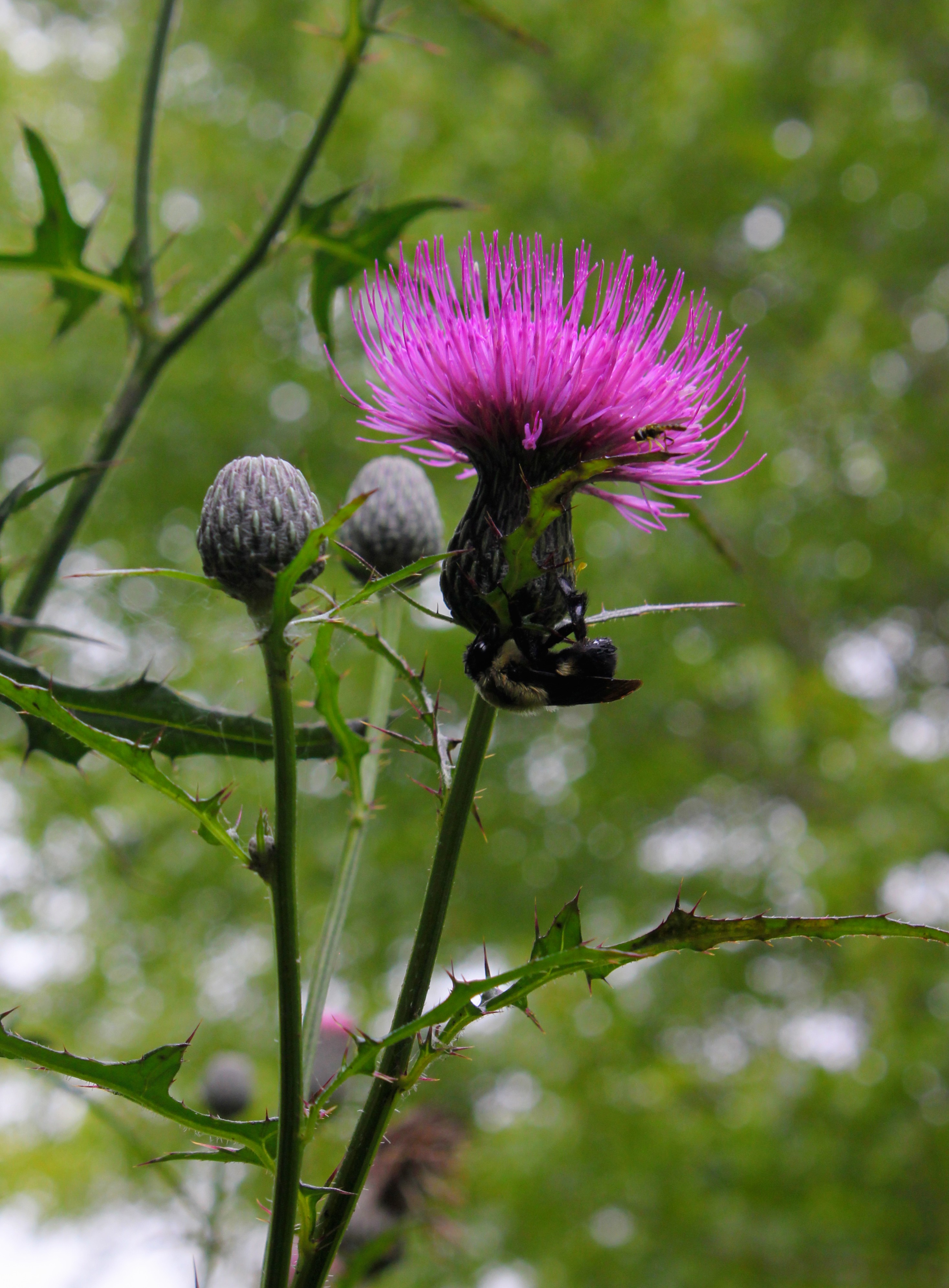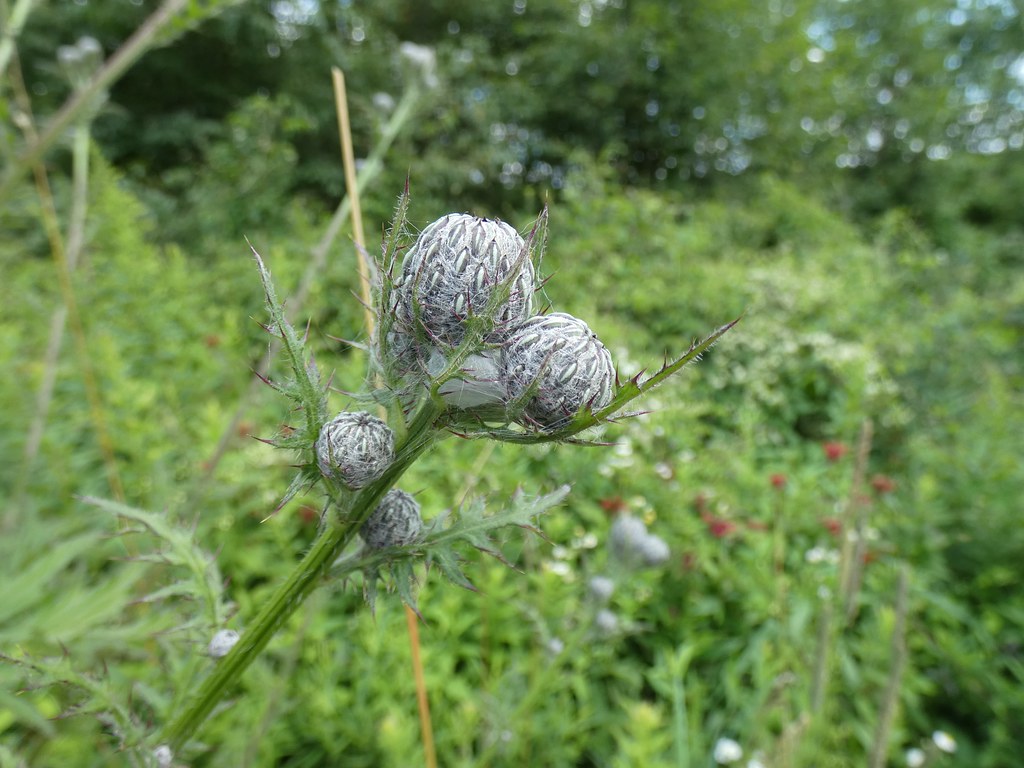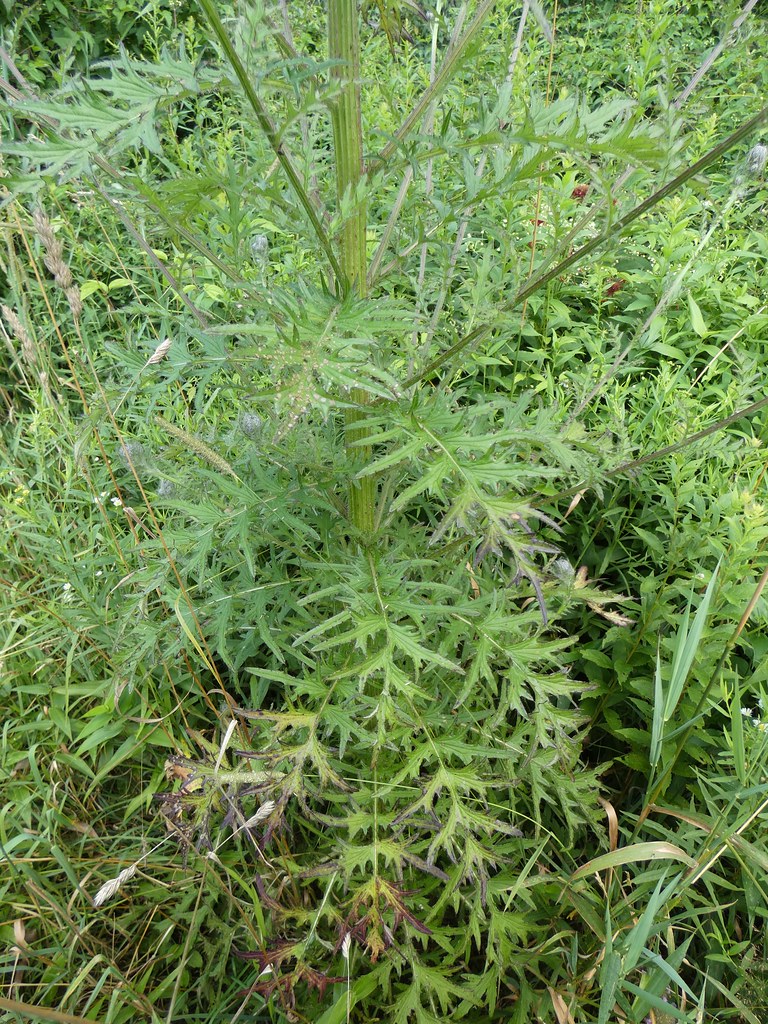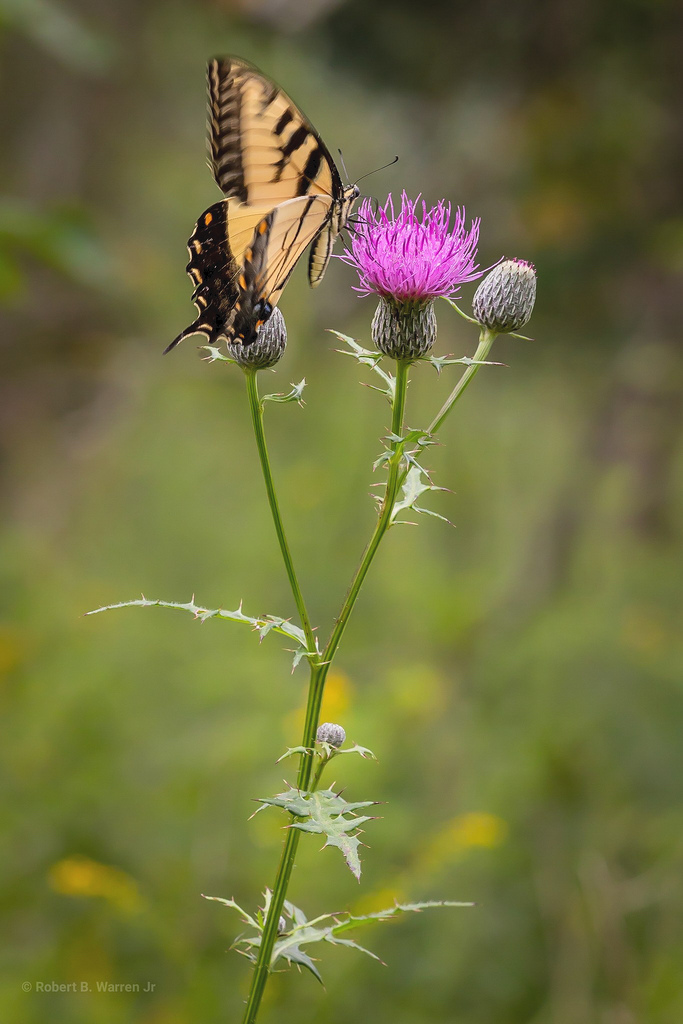Map Snapshot






25 Records
Status
Swamp Thistle is an uncommon plant in Maryland. It has a limited and scattered distribution. It is ONLY found growing in wet environments. If you see a thistle, and its feet are not wet, it is not a Swamp Thistle! The 2018 Maryland RTE Plant List says, "Swamp Thistle [can be found in] wet meadows, acidic seepage swamps, and mountain peatlands."
Description
Cirsium thistles can be an identification challenge. Our first identification clue is habitat. Like we mentioned above, if the thistle's feet are not wet, it is not Swamp Thistle. The second identification point is made by Chris Frye, our Maryland State Botanist. Chris says, "Swamp Thistle is the only Cirsium thistle that you can grab and it doesn't hurt." Unlike many of Maryland's other Cirsium thistles, the spines of Swamp Thistle are not stiff enough to cause any pain. The third identification point is that the phyllaries do not have strong spiny tips.
Seasonality Snapshot
Source: Wikipedia
| Cirsium muticum | |
|---|---|

| |
| Scientific classification | |
| Kingdom: | Plantae |
| Clade: | Tracheophytes |
| Clade: | Angiosperms |
| Clade: | Eudicots |
| Clade: | Asterids |
| Order: | Asterales |
| Family: | Asteraceae |
| Genus: | Cirsium |
| Species: | C. muticum
|
| Binomial name | |
| Cirsium muticum | |
| Synonyms[2] | |
|
Synonymy
| |
Cirsium muticum, also known as swamp thistle, marsh thistle, dunce-nettle, or horsetops, is a North American species of plants in the family Asteraceae, native to central and eastern Canada and the central and eastern United States.
Description
[edit]Cirsium muticum is a biennial plant that reaches a height of 180 centimetres (71 in). Its taproot is fleshy and its stem is ridged with hairs toward the base.[3] The leaves are alternate in position, pinnately lobed, and ovate in shape. The leaf lobes are often asymmetrical and forked irregularly with the angles containing fine trichomes (multicellular hairs). The leaves become progressively smaller towards the inflorescence; there are often a few trichomes on the underside.[3] The peduncles are 0–15 cm (0.0–5.9 in), each with an inflorescence made up of many tiny florets; the involucre has cobwebby white hairs, and it is often slightly sticky. The purple florets can be up to 27 mm (1.1 in) long.[3][4]
Taxonomy and naming
[edit]Cirsium muticum was described by the French naturalist André Michaux in 1803. It is one of many species in the thistle genus Cirsium. The epithet muticum, meaning blunt, refers to its phyllaries.
Distribution and habitat
[edit]Cirsium muticum has been found across every province of Canada from Labrador and Newfoundland to Saskatchewan. In the United States, it grows primarily in the Northeast, the Great Lakes region, and the Appalachians, with isolated populations scattered across the South from Texas to the Carolinas.[5][6][7]
Cirsium muticum is found mostly in alkaline swamps, wetlands, marshes and low forests but some races have been known to grow in wet alpine climates.[3]
Ecology
[edit]Cirsium muticum is as host for some species of butterflies and moths, including the swamp metalmark butterfly (Calephelis muticum), a species that is currently undergoing risk assessment in the United States. The butterfly lays its eggs on the swamp thistle, and when the eggs hatch, the flowers are the only food source for the caterpillars.[8] It is also a larval host to the painted lady butterfly, and songbirds eat its seeds.[9] Species that grow with it include Aster umbellatus (flat-topped white aster), Solidago patula (rough-leaved goldenrod), Lysimachia quadrifolia (prairie loosestrife), and Gentiana procera (smaller fringed gentian).[8]
Human importance
[edit]Swamp thistles can be used to make decorative arrangements. They are often planted in gardens because they are seen as more manageable than other thistles, while still potentially having some anti-herbivory properties.[10]
Conservation
[edit]The plant is not endangered in Canada or the U.S. but it is threatened in the state of Arkansas,[5] and vulnerable in the province of Saskatchewan.[11] Cirsium muticum is at risk primarily because it is a wetland plant, and North American wetlands have been much reduced in extent over the last two centuries.
References
[edit]- ^ "NatureServe Explorer 2.0". explorer.natureserve.org. Retrieved 2023-10-23.
- ^ The Plant List, Cirsium muticum Michx.
- ^ a b c d C. Frankton & J. Moore (1963). "Cytotaxonomy of Cirsium muticum, Cirsium discolour, and Cirsium altissimum". Canadian Journal of Botany. 41: 73–84. doi:10.1139/b63-008.
- ^ Flora of North America, Swamp thistle, dunce-nettle, horsetops, chardon mutique, Cirsium muticum Michaux
- ^ a b "PLANTS Profile for Cirsium muticum Michx. (swamp thistle)". United States Department of Agriculture. 2011. Retrieved October 20, 2011.
- ^ Biota of North America Program 2014 county distribution map
- ^ Biota of North America Program 2014 state-level distribution map
- ^ a b John A. Shuey, John V. Calhoun & David C. Iftner (1987). "Butterflies that are Endangered, Threatened, and of Special Concern in Ohio". Ohio Journal of Science. 87 (4): 98–106. hdl:1811/23205.
- ^ The Xerces Society (2016), Gardening for Butterflies: How You Can Attract and Protect Beautiful, Beneficial Insects, Timber Press.
- ^ H. Hamilton (2010). "Cirsium muticum Michx., Compositae". Archived from the original on November 5, 2010. Retrieved December 10, 2011.
- ^ "Species: Cirsium muticum". University of Saskatchewan. 2008-05-30. Retrieved December 10, 2011.
External sources
[edit]- Morse, K. (2009). "Cirsium muticum –Swamp Thistle". Archived from the original on 2012-04-22. Retrieved 2011-12-15.






